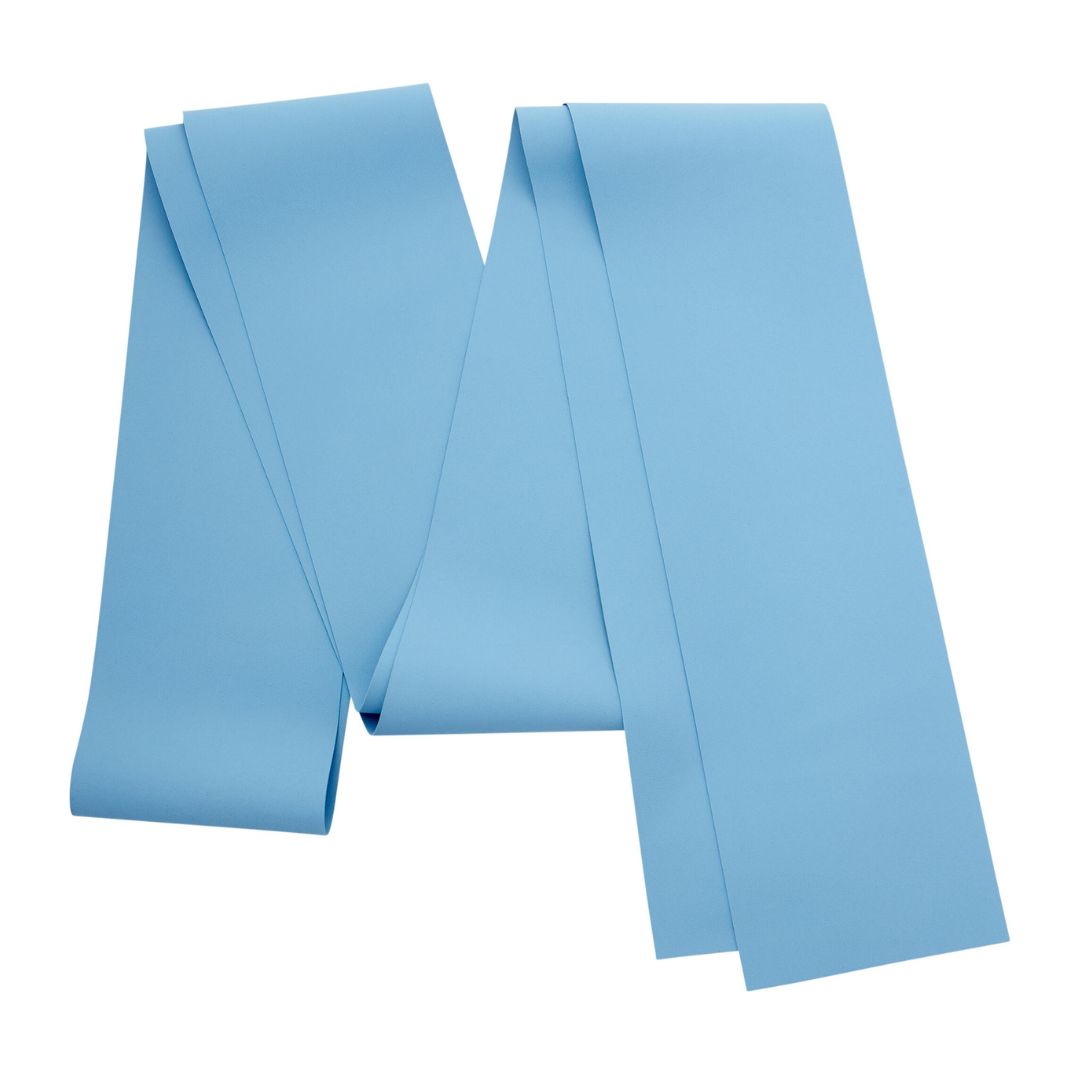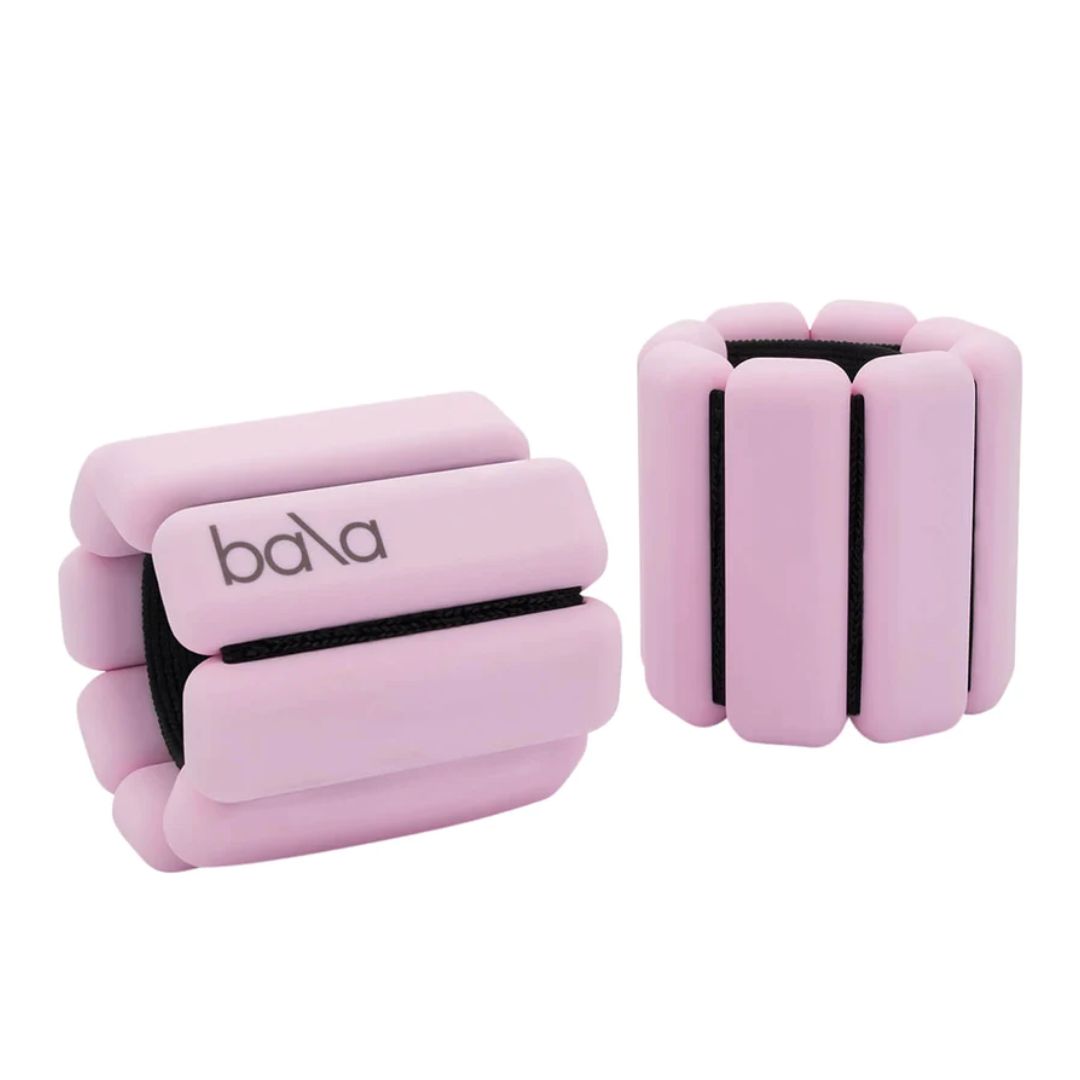
If you've been on TikTok lately, you'll likely have seen wall Pilates doing the rounds.
The simple, at-home Pilates workout is being dubbed one of the most effective sweat sessions of the summer, promising to boost your tone, balance and mental clarity, all from the comfort of your own home.
It's not the only routine that's gone viral as of late - Pilates exercises are having a bit of a moment at current, with celebrities including Hailey Bieber, Jennifer Aniston and Beyonce all reported to be fans.
While some versions of the low-impact workout require a gym membership or specialist equipment (we're looking at you, Reformer Pilates), this one's appeal is that it doesn't. You can do it from home, your garden, or even your holiday destination, making it universally appealing and suitable for beginners, too.
Keen to read more about the current trending wall workout? Keep scrolling as we pick the brains of a qualified Pilates instructor. Do scroll our guides to Pilates for beginners and the many benefits of Pilates while you're here. Wondering, does wall Pilates work? Read what happened when one MC UK staffer tried it, here.
Introducing wall Pilates, 2024's must-try workout
What is a wall Pilates?
So, what about wPilates wall workouts, the latest viral Tiktok trend? "Wall Pilates is essentially an evolution of mat Pilates that can be completed at home using a wall for extra resistance," explains the instructor.
"Pilates blends six key principles: concentration, control, centre, flow, precision and breathing," shares Amanda Baracho, Pilates instructor and founder of X-Club. Carrying out precise, controlled, and purposeful movements focuses your mind and helps you build greater body awareness.
Celebrity news, beauty, fashion advice, and fascinating features, delivered straight to your inbox!
So, what about wall Pilates, the latest viral Tiktok trend? "Wall Pilates is essentially an evolution of mat Pilates that can be completed at home using a wall for extra resistance," explains the instructor.
As a variation of mat Pilates, it involves pressing your feet or other body parts against the wall for stability while you complete a range of Pilates exercises. "It's a great way to spice up your workouts and add a bit of flavour to traditional Pilates moves," she explains.
Why a wall? In short, because it provides support and stability as you stretch and tone your muscles, shares the expert.
6 benefits of trying a Pilates wall workout
All Pilates workouts are known to enhance strength, mobility, balance, flexibility, and stability.
That said, wall Pilates in particular has a number of benefits. It can:
1. Be done from home
Wall Pilates can be performed almost anywhere - your home, holiday destination, or gym, with or without equipment.
The great thing about the workout is that it doesn't require loads of kit and makes the most of limited spaces, shares Baracho.
"This makes it a great option for an effective home or holiday workout," shares Baracho.
Try this: you can perform Pilates favourites such as the Hundred, Roll Down or Plank, replacing equipment such as the bands, balls or the Reformer machine with a wall as your prop.
2. Provide (free!) extra resistance
"As well as providing support and stability, the wall can be used to add extra resistance to your usual mat workouts," shares the expert.
Think of it this way: Pilates as a practice works the whole body, but using a wall to perform moves can put extra emphasis on your core and glutes. "Standing exercises that target your arms and chest - like push-ups and planks - also treat your upper body to an extra workout."
3. Improve your core strength and stability
Did you know? Pilates wall exercises can significantly enhance your core strength and stability.
"The wall allows you to engage your abdominals, back muscles and pelvic floor effectively," Baracho shares. "This can also help improve posture and overall body alignment."
4. Support your back and postural alignment
Not only will wall Pilates build your confidence with certain exercises ("the wall acts as a tactile and supportive guide during exercises," shares the expert), it also promotes proper postural alignment.
Struggle with back pain or bad posture? "Regular wall Pilates workouts can also help correct imbalances and poor posture, relieving tension and strain on the spine which can contribute to better spinal health," she details.
5. Appeal to all fitness levels
In particular, wall Pilates is a great option for beginners, shares Baracho.
Why? Well, because "the wall helps you reach more challenging positions while providing a sense of security," she explains. Plus, "it can be modified to suit various fitness levels and physical abilities, making it accessible to a wide range of individuals."
6. Increase your body awareness
Last but by no means least, Baracho explains that, as with mat and Reformer Pilates, wall Pilates requires mindful movement and body awareness.
"As you focus on maintaining contact with the wall and proper alignment, you’ll develop a better understanding of your body's positioning, movements, and muscle activation," she concludes.
Pilates wall workout to try tonight
Aim for three rounds of each of the following positions, practicing each move for 45 seconds to a minute.
1. Wall roll down
What? This exercise strengthens the core muscles, especially the abdominals and lower back.
Why? It stretches the spine, hamstrings, and calves, improving posture and body awareness as the wall serves as feedback for postural alignment.
How to?
- Stand with your back against the wall, with feet hip apart and a fist distance from the wall.
- Lengthen your spine along with the wall and engage your abdominal muscles.
- Slowly begin to roll down the wall, articulating through each vertebra, as if peeling your spine off the wall.
- Continue rolling down until the point of challenge for your body. Keep your knees straight at all times to take this opportunity to stretch your hamstrings and cuff muscles.
- Inhale to prepare, and exhale to slowly roll back up the wall, stacking each vertebra against the wall.
- Repeat this exercise for eight to ten repetitions, focusing on controlled movements and maintaining optimal alignment throughout.
2. Wall squat
What? As the name suggests, a squat is practised with your back against a wall.
Why? This exercise aims to tone and strengthen the quadriceps, hamstrings, glutes, and calf muscles, improving lower body stability and balance.
How to?
- Start by standing with your back against the wall, feet hip-width apart one step away from the wall.
- Slowly slide your back down the wall, bending your knees up to 90 degrees and lowering your body into a squat position. Pay attention to your knees so that they don’t bend inwards. Keep your knees aligned with your ankles, ensuring they do not go past your toes.
- Aim to have your thighs parallel to the floor, or as close as comfortable, while maintaining your back against the wall.
- Hold this position for 30-60 seconds, or as long as you can maintain your connection and form.
- Repeat this for eight to ten repetitions or if you’d like an extra challenge you can start by extending one leg at a time.
3. Wall bridge
What? In short, this is similar to a glute bridge, but against a wall.
Why? This exercise strengthens and tones the glutes, hamstrings and core muscles. It also improves hip mobility and stability.
How to?
- Lie down on your back, with your feet hip-width apart and resting against the wall.
- Place your arms by your sides on the mat with palms facing down.
- Engage your core muscles and gluteus. Press your feet into the wall, lifting your hips off the ground and articulating your spine, bone by bone off the mat while forming a straight line from your shoulders to your knees.
- Hold this position for a few seconds, focusing on engaging your glutes and maintaining stability.
- Slowly lower your spine vertebra by vertebra back on the mat.
- Repeat this exercise for eight to ten repetitions. If you would like an extra challenge. you can progress to single-leg shoulder bridge exercises.
Shop our go-to Pilates equipment now:

I've tested a lot of Free People kit and love that everything I've tested has been both stylish and sweat-wicking. For Pilates, this sleek onesie gets my vote. Designed with low impact sweat sessions in mind, it passes the squat test and will support you through any see you through many a criss cross and leg circle.

Looking to take your home workouts up a level? Resistance bands are a great bit of kit for adding tension and challenging your muscles. Some of my go-to's are from Amazon - they're affordable and easy to order, but you'll still notice the difference they make to your sessions.

We wrote an entire Bala Bangles review because yep - they're pretty great. While 1lb might not seem like a lot of weight, as MC UK Producer Sofia Piza confirmed, they can really help to level up your home workouts and walks.

One great thing about Pilates being low impact is that you don't need to wear as heavy duty sweat-wicking kit. Enter stage right, this soft to the touch wrap top made from their trademark modal Lenzing yarn. Do note: it runs a little small, so it's worth sizing up. That said, it's so comfortable you'll be counting down the minutes until your home workouts.
Does wall Pilates really work?
This will depend on your end goal, but Pilates coach Amanda Baracho confirms that it is a great workout for improving fitness levels if practiced enough and with the correct form.
Why? In short, because the variation of mat Pilates requires using extra stability and support, which means you're utilising more muscles to tone and stretch your body, she shares.
Plus, it's easy to do from just about anywhere, accessible to all, and free, making it a great option for all abilities.

Ally is Marie Claire UK's Senior Health and Sustainability Editor, a well-regarded wellness expert, ten-time marathoner, and Boston Qualifying runner.
Utilising her impressive skillset and exceptional quality of writing, she pens investigative, review and first-person pieces that consistently demonstrate flair and originality.
As well as writing, Ally manages a team of freelancers, oversees all commissioning and strategy for her pillars, and spearheads the brand's annual Women in Sport covers, interviewing and shooting the likes of Mary Earps, Millie Bright, and Ilona Maher. Shortlisted for three BSMEs and winning one in 2022, Ally lives and breathes her verticals: her eye for a story and connections within the wellness sphere are unrivalled. Follow Ally on Instagram for more.
